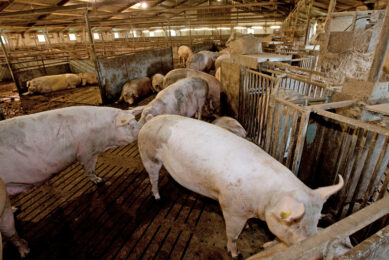Using enzymes in pig diets to control phosphorus

By the end of this year new legislation in Canada will restrict the amount of phosphorous allowed to be applied to the soil from livestock production. But what are feed companies using to manage phosphorus?
Enzymes are used to improve the pig’s ability to digest phosphorus and thus have allowed pork producers to reduce the amount of phosphorus added to the diet cutting production costs and environmental impacts.
But with the pending legislation restricting phosphorous the Canadian International Grains Institute (CIGI) and the Manitoba Livestock Manure Management Initiative are developing a survey to determine what strategies feed companies are using to manage phosphorus.
A key challenge, Dr Newkirk says, is that a lot of the phosphorus found in plants is in a form the pig is unable to utilize, as each ingredient is different.
According to Dr Newkirk, survey participants will be asked about their formulation practices, including levels of phosphorus and availability assumed for each ingredient, how much and what kind of enzyme is being used and how much of an increase in phosphorus availability is being assumed when that enzyme is added.
Source: Farmscape











